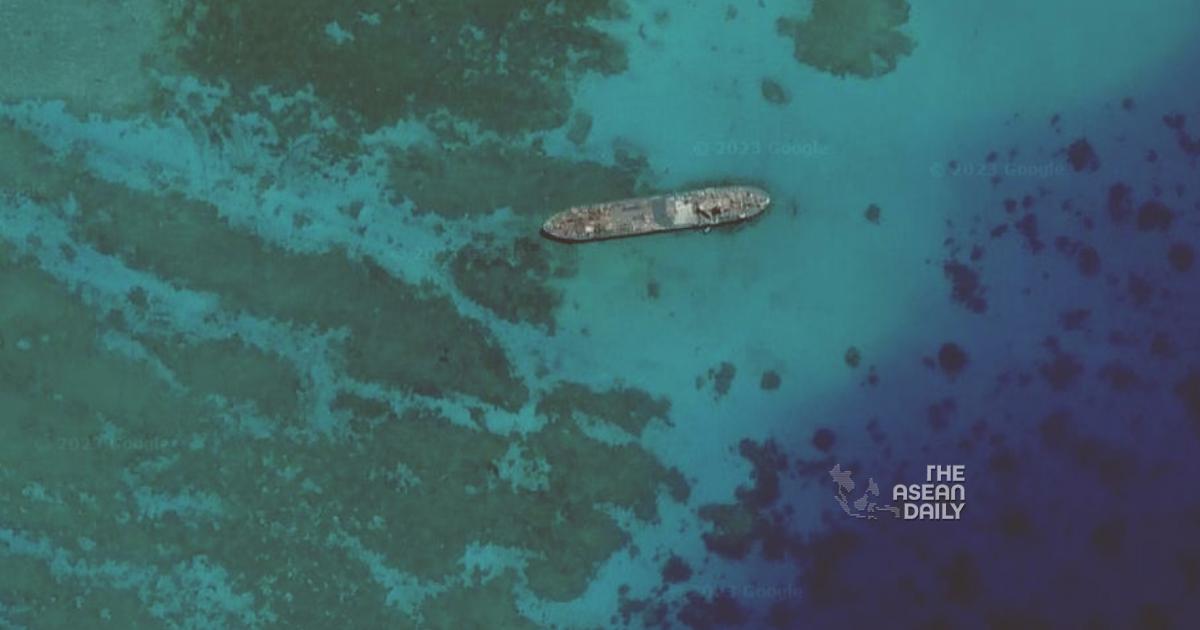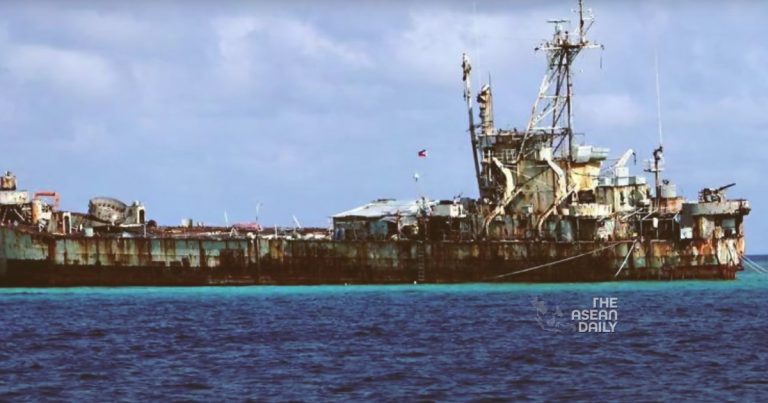7-8-2023 (MANILA) In the ongoing territorial dispute over the South China Sea, a decaying Philippine navy ship from World War II has become a focal point of contention between Manila and Beijing. The situation escalated on Saturday (Aug 5) when the China Coast Guard allegedly obstructed and used water cannons against Philippine vessels attempting to supply food, fuel, and water to Filipino troops stationed on the BRP Sierra Madre at Second Thomas Shoal.
The Associated Press (AFP) delves into the history of the dilapidated vessel, named after a Philippine mountain range, and examines how it has become the source of the latest diplomatic dispute concerning the South China Sea.
THE SIERRA MADRE: A HISTORY
Originally commissioned as the US tank-landing ship USS LST-821, the 100-meter-long vessel played a role in World War II. It was later renamed the USS Harnett County and deployed during the Vietnam War, where it functioned as a base for helicopter gunships, according to the United States Naval Institute. Following the war, the ship was acquired by the Philippine Navy and renamed the BRP Sierra Madre.
STRANDED ON A REEF
In the late 1990s, the Philippine military intentionally grounded the BRP Sierra Madre on Second Thomas Shoal as a strategic move to counter China’s advances in the highly disputed waters. This unconventional tactic aimed to establish a Philippine presence on the shoal in response to China’s occupation of the nearby Mischief Reef, which was then uninhabited but also claimed by Manila. China has since transformed Mischief Reef and other reefs into militarized artificial islands to assert its territorial claims.
Second Thomas Shoal, situated in the Spratly Islands, is approximately 200 kilometers west of Palawan, a western Philippine island, and over 1,000 kilometers away from China’s nearest major landmass, Hainan Island.

ONGOING DEVELOPMENTS
China asserts its ownership over almost the entire South China Sea, including Second Thomas Shoal, and maintains a significant presence with hundreds of vessels patrolling the waters and swarming the reefs. Beijing has disregarded a 2016 international court ruling that rejected its claims as having no legal basis.
According to Manila, China’s coast guard and navy routinely obstruct or tail Philippine ships conducting patrols in the area. These vessels also frequently attempt to disrupt the resupply operations to the small Philippine garrison stationed on Second Thomas Shoal. The few Philippine marines deployed on the BRP Sierra Madre rely on these supply missions for their survival in this remote assignment. The Philippine Coast Guard fears that if the military detachment were to leave, China would seize Second Thomas Shoal.
THE SIGNIFICANCE OF THE DISPUTE
The South China Sea is considered a potential powder keg, with concerns that a miscalculation or accident could trigger a military conflict. While the Philippines is relatively underarmed, the United States has reaffirmed its commitment to defend its long-time ally in the South China Sea under a longstanding mutual defense pact. Although the US does not claim territorial rights in the region, it continues to conduct its own patrols, which has irked Beijing. The US justifies these patrols as upholding “freedom of navigation” in the sea, through which trillions of dollars in trade pass annually.
REACTIONS TO THE LATEST INCIDENT
Following the recent incident, Manila summoned Beijing’s envoy on Monday. President Ferdinand Marcos informed reporters that the Chinese position is that they are defending their claim, while the Philippines maintains that it owns the area in question, resulting in a grey area under discussion.
Since 2020, the Philippines has lodged over 400 diplomatic protests against Beijing for its “illegal activities” in the South China Sea, according to the foreign ministry. National Security Council spokesman Jonathan Malaya stressed the Philippines’ commitment to Second Thomas Shoal, also known as Ayungin Shoal.
The US State Department condemned China’s actions on Sunday, stating that they were carried out by the coast guard and “maritime militia,” posing a direct threat to regional peace and stability. Britain, Australia, Canada, and the European Union also criticized Beijing’s actions.
China’s Foreign Ministry responded on Monday, firmly opposing the US statement, which it deemed an attack on China’s maritime rights in the South China Sea. The ministry accused Washington of “blatantly” supporting the Philippines’ violation of China’s sovereignty.




